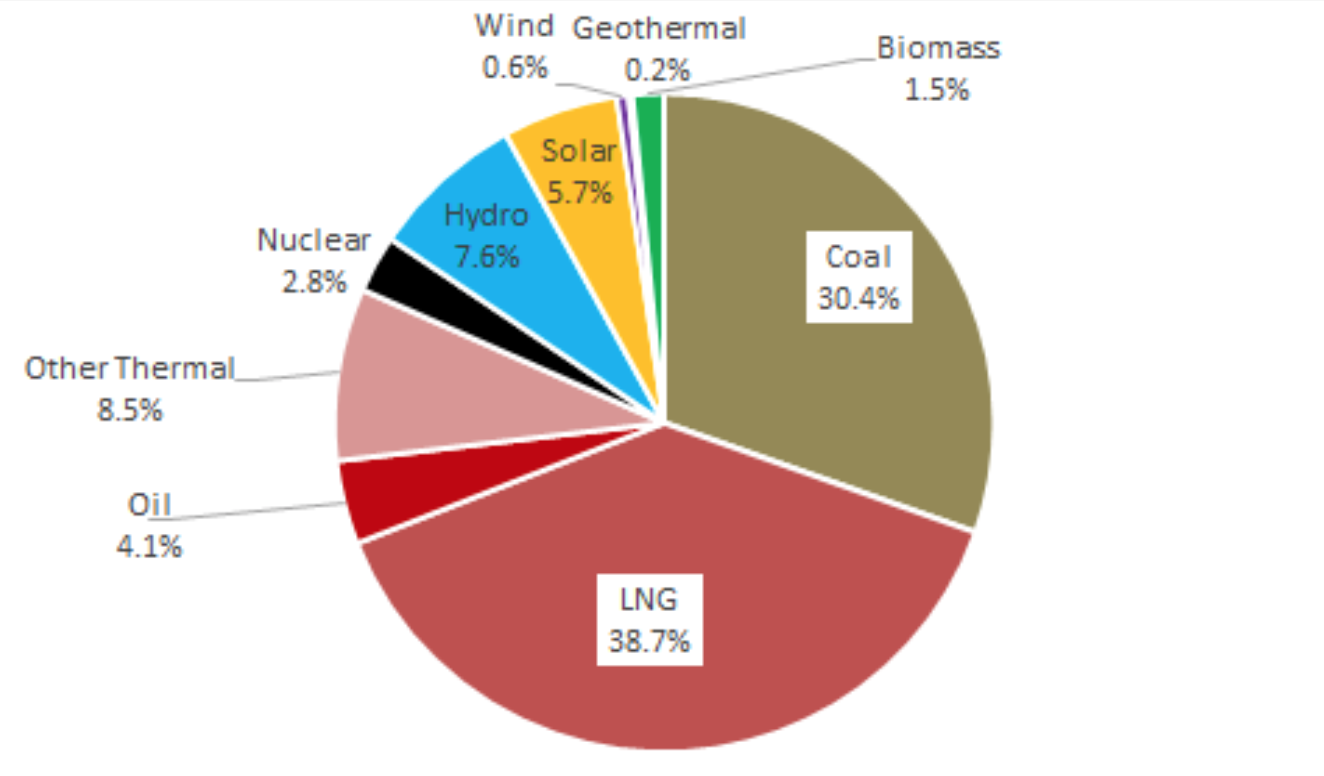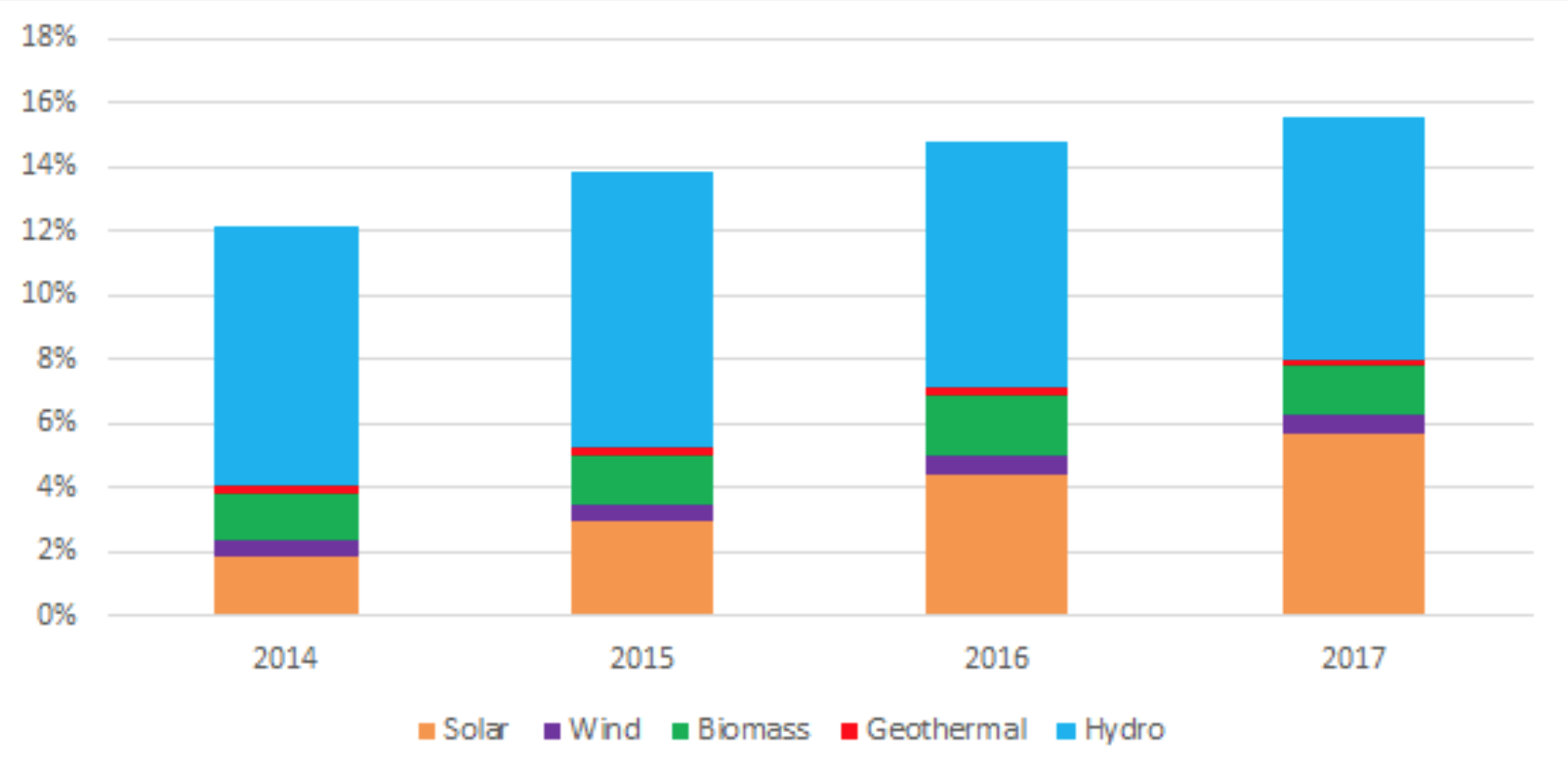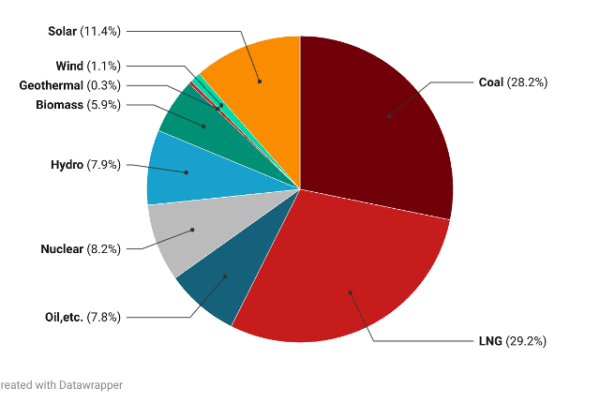Based on the energy statistics of the Ministry of Economy, Trade and Industry (METI) and other information sources, the ISEP has estimated the distribution shares of different energy sources in the total power generation capacity (including non-utility, self-consumption) of Japan in 2017. The estimation has revealed that the share of the renewable energy has increased to 15.6%, while the share of solar PV was 5.7%.
Summary
- It is estimated that the share of renewable energy in total power generation in Japan in 2017 was 15.6%.
- The share of solar PV increased from 4.4% in the previous year (2016) to 5.7% in 2017, increasing the share of VRE(Variable Renewable Energy ) to 6.3%.
- The share of other renewable energy sources (Wind, Geothermal and Biomass) remained mostly at the same level.
- The share of thermal power generation(Fossil Fuel) decreased to 81.6% but remained at a high level, while nuclear power has increased to 2.8% maintaining a low level.
The share of renewable energy in total power generation in Japan in 2017
The ISEP has made an estimation of the distribution shares of different energy sources in the total power generation (including non-utility, self-consumption) in Japan in 2017, based on METI’s survey of electric power statistics and other information sources. In this estimation, figures of the previous year (2016) were used for non-utility power generation, wind power, estimated self-consumption of home solar generation after October 2017. Moreover, as for wind power, the amount of transmitted power through the FIT system has been used (as some duplication of figures is expected in METI’s power statistics).
The estimation has revealed that the share of the renewable energy in the total power generation capacity in 2017 has increased by one point, from 14.7% in 2016 to 15.6% (Table 1, Figure 1). There has been an increase of one point each year since 2014 (Figure 2). The share of solar PV has increased by 30%, from 4.4% in 2016 to 5.7%. This means that in combination with the share of wind power that is 0.6%, the share of variable renewable energy (VRE) has increased from 5.0% in 2016 to 6.2%. However, the share of renewable energy sources other than solar PV remained mostly the same since the previous year, except for wind power that increased by 10%. There have even been slight decreases in the level of geothermal and biomass sources. Hydropower generation that is dependent on the water flow of the rivers in each year was nearly at the same level in 2017 as in the previous year.
The level of thermal power generation(Fossil Fuel) is on the decline, and in 2017 the share has decreased to 81.6% from 83.6% in 2016. However, the share of this energy source remained at a high level. On the other hand, since 2015, the level of nuclear power has kept increasing every year after 2014 when the amount fell to zero once. The share in 2017 was 2.8%, which means that the level of nuclear power remained low (approximately half of the solar power).
Table 1. Changes in the share of renewable energy sources in the total power generation in Japan
| Sources | 2014 | 2015 | 2016 | 2017 | Remarks |
| Hydro | 8.0% | 8.6% | 7.6% | 7.6% | Including large-scale |
| Biomass | 1.5% | 1.5% | 1.9% | 1.5% | Including self-consumption |
| Geothermal | 0.2% | 0.2% | 0.2% | 0.2% | |
| Wind | 0.5% | 0.5% | 0.5% | 0.6% | Transmission via FIT |
| Solar PV | 1.9% | 3.0% | 4.4% | 5.7% | Including self-consumption |
| Renewable energy (total) | 12.1% | 13.8% | 14.7% | 15.6% |
Source: ISEP, based on METI’s survey of electric power statistics
Figure 1. Share of energy sources in power generation in Japan (2017)

Source: ISEP, based on METI’s energy statistics and other information
Figure 2. Changes in the share of renewable energy sources in total power generation in Japan

Source: ISEP, based on METI’s energy statistics and other information





